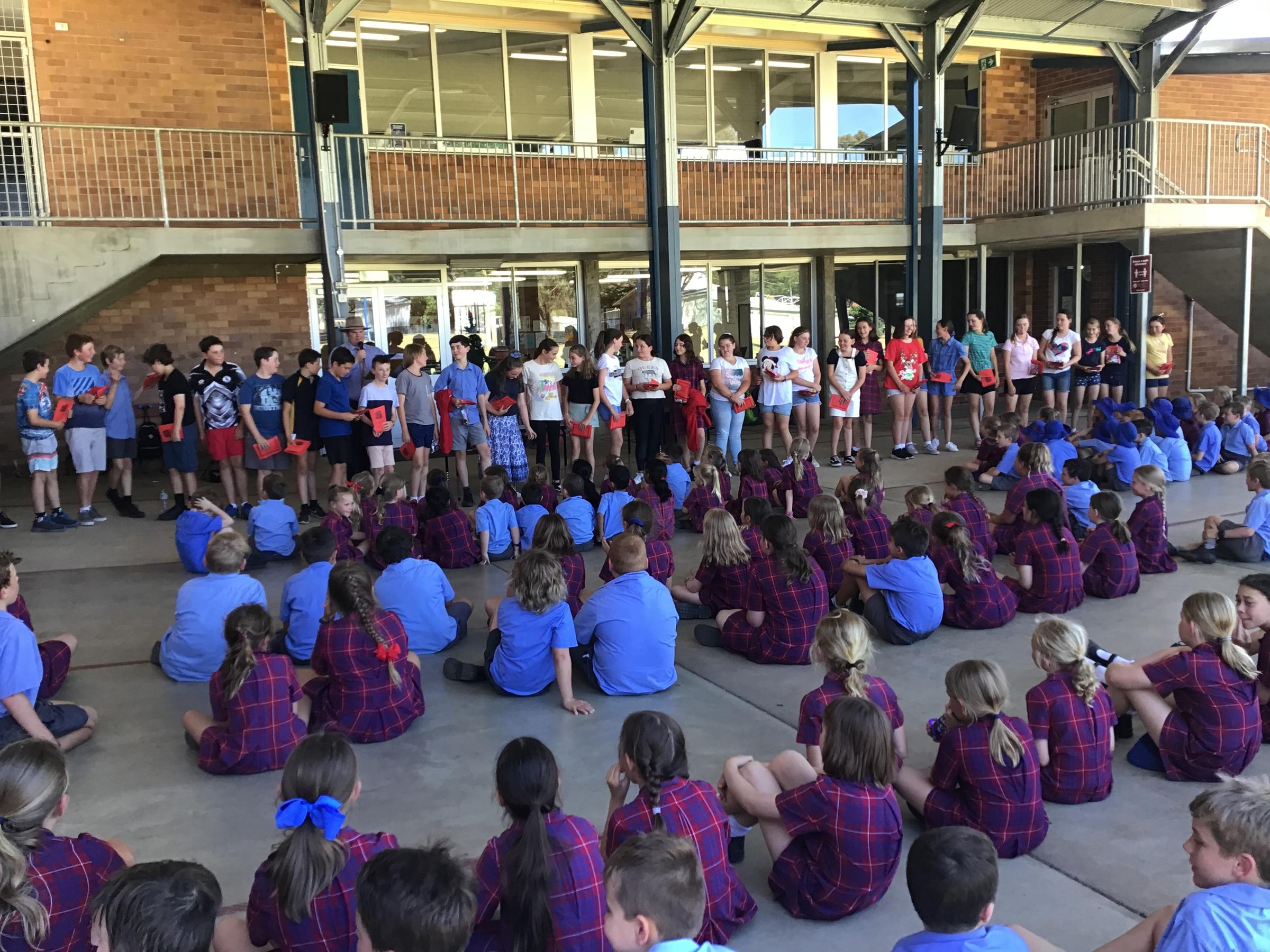Principal's Report
Thoughts from our Principal - Ms Maria Mowle

Principal's Report
Thoughts from our Principal - Ms Maria Mowle
Our classroom layouts are formulated differently to that which we recall from our school days. The schools within our dioceses have adopted the theory of David Thornberg to ensure our students are engaged with their learning. The room configuration includes a waterhole to encourage students to stop, look and listen, a campfire to host collaborative activities and caves, where the students retreat to work individually.
Please find below an explanation of his theory.
David Thornberg: From the Campfire to the Holodeck: Creating Engaging and Powerful 21st Century Learning Environments


The physical learning environment has a powerful impact on students’ social and emotional landscape.
Physical spaces should be intentionally designed to support academic achievement. In the development of 21st century learning spaces, the works of futurist David Thornburg and his primordial archetypes are heralded. David Thornburg identifies three archetypal learning spaces— the campfire, cave, and watering hole—that schools can use as physical spaces and virtual spaces for student and adult learning.
The traditional linear, boxed layout of the classroom no longer suits the needs of today’s learners. Information technology has fundamentally changed how students today interact with information, their world, and each other. The world itself has evolved, and the skills and knowledge needed have similarly shifted.
A 21st century classroom design facilitates several types of learning and accommodates various types of learners. A 21st century learning space has several key elements, including:
· Adaptable layout
· Flexible seating
· Areas suited to specific tasks
· A small teacher work area
· Resources that are easily accessible to students
· Available technology.
Since primordial times, people have gathered to hear the wisdom of experts. For Thornburg, the image of the campfire embodies this transfer of knowledge. People gathered around campfires to hear stories from the storytellers, the keepers of community wisdom.
Modern classrooms have replaced the fire with projectors and whiteboards. The traditional classroom relies heavily on lecture space, where students listen to instruction from the teacher. Many learn from the one.
The campfire space in the classroom is a semi-circle/horseshoe design to enhance collaboration. The campfire should provide display space for presentation materials. In today’s schools, the experts are not only teachers and guest speakers, but also students who are empowered to share their learning with peers and other teachers.
Direct instruction certainly has a place in modern teaching environments, but it is only one mode of learning.
The watering hole represents conversational space. Thousands of years ago, people would meet informally around the watering hole, sharing information with each other. Today, in offices people gather around the water cooler. Conversations with others is a form of social learning. 21st century learning spaces should provide places for peer-to-peer learning and small group discussions.
In the classroom, the watering hole space might have several small tables around which a few students can work together. A watering hole might take the form of a cluster of cushions and bean bags in a nook of the room.
At its most simple, the social learning space could be chairs carried over from the lecture space.
The campfire brings students into contact with an expert, and the watering hole brings contact with other students. The cave brings students into contact with themselves. The cave is a space to reflect, where the student incorporates external information into internal understanding. Thinking and reflecting are important parts of learning, and students need space to sit quietly alone at times.
Caves come in many shapes and sizes. Classrooms might have students create their own cave by moving a chair off by itself and using headphones. Soft seating can be used for independent time, as can a cushion in a corner.
In life, learners apply the insights gained from lectures, dialogue, and self-reflection. Life is the practical application of what is learned. Students benefit from space for experiential learning, where they can try out the things just learned. Students’ learning is reinforced when they can see the real-world application of theories.